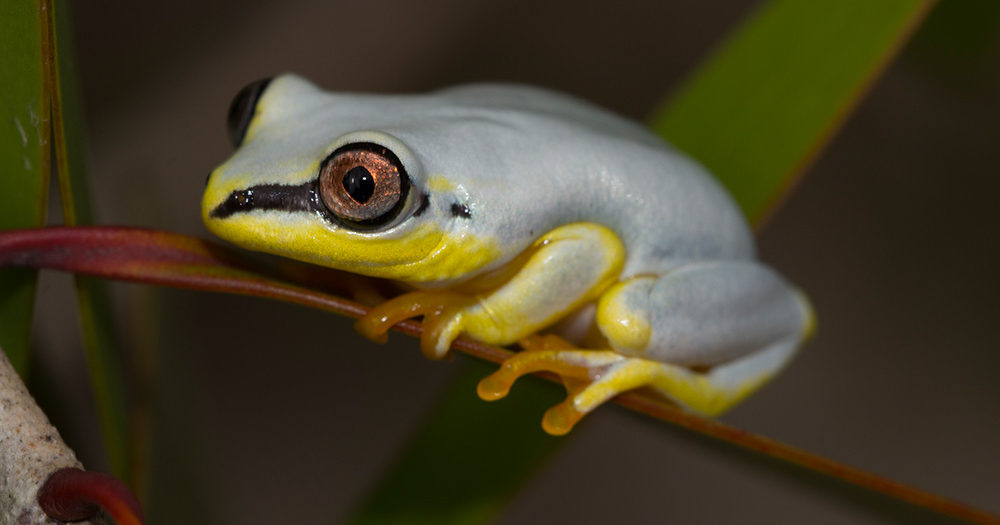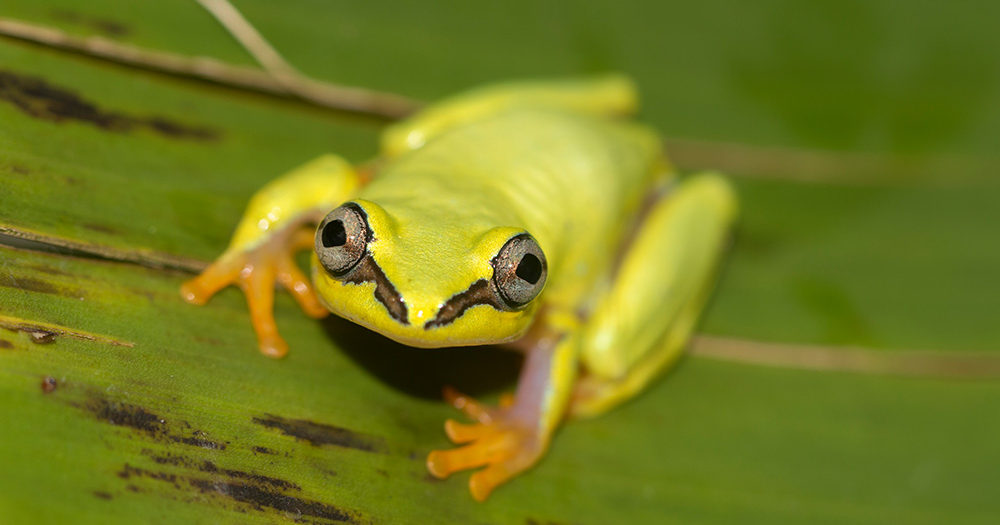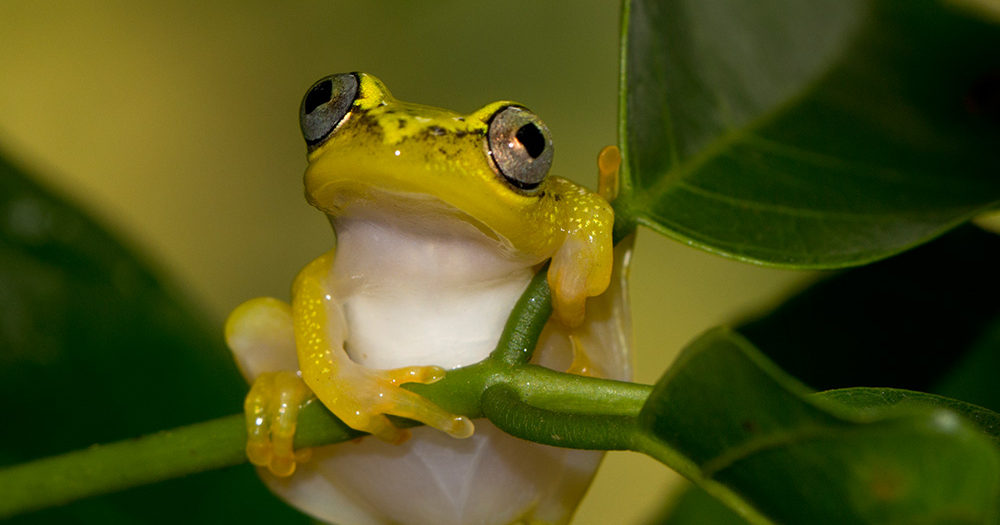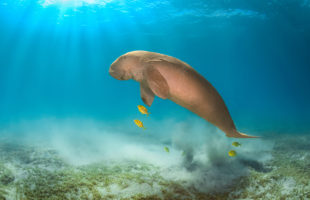An especially pretty frog is the blue reed frog (Heterixalus madagascariensis) or Madagascar reed frog: There are yellow and sky blue variations, with yellow or orange arms, legs, hands and feet. In the sun, they often become almost white.
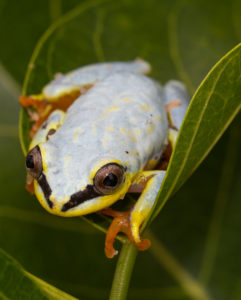
Literature mentioned the sky blue frog for the first time in 1841: The French zoologist André Duméril and his assistant, Gabriel Bibron, described a small, maximally 40 millimeter long frog with white-blueish ground colour and black stripes between nose and eyes. As distribution area, they simply noted “Madagascar”. This is right indeed, but the Madagascar reed frog only occurs along the eastcoast in rain-laden, wet areas between Sambava and Antalaha in the northeast and Toamasina (Tamatave) in eastern Madagascar. They also settle the island Nosy Boraha (St. Marie) and Masoala peninsula. The blue reedfrog does not unconditionally need intact rainforest to survive. Rather more you find these small frogs in bushes and shrubs with small, thick leaves on beaches and lake shores, in small hut villages and banana plantations as well as in savannah-like, open terrain. They also like swamps, but it is essential for them not to live at very high elevations. By day one finds these frogs sleepingly clinging to leaves, sitting in leaf axils or even upside-down on the underside of leaves. As soon as the sun sets in the evening, it is time for the reed frogs to become active. Now they chase tiny insects such as ants, termites and tiny midges.
Along the eastcoast, dry season turns out to be very moderately – it still rains from time to time, but less than before. That is why matings take place throughout the whole year, but with seasonal deviations. With the beginning of the rainy season, with torrential precipitation and raising temperatures in October, the main mating season of the blue reed frogs starts. The more the evening progresses, the louder and the more intensive call the males for potential partners. They mostly sit close to water bodies, so they can quickly jump into the water when threatened.
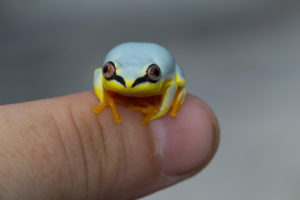
Madagascar reed frogs have two different calls: One long call which sounds a little like a squeaking door, and a short one which is more like a shrill whistle. The females – wo do not call – are quite difficult to distinguish: They are exactly coloured like males, but only a little larger and less slender.
If a mating was successful, the female will lay up to 200 small, spherical black eggs, the spawn, in stagnant waters nearby. Mostly, the eggs stick on plants at the edge of the water, and after few days, the first tadpoles hatch. They are small and brown with beige patterns and a speckled tail. In the water, they feed on mosquitoe larvae, water fleas and other tiny insects, and do not despise herbal food, too. It takes about four months for a tadpole to develop into a small, still quite dark colored young frog.
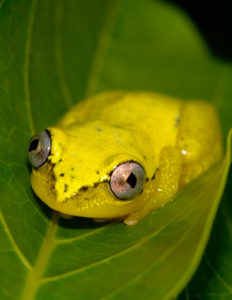
On the IUCN red list of threatened species, blue reed frogs are liste das least concern, although the species lacks exact knowledge about population size. Since it is very common along the upper eastcoast and can easy be found, scientists assume a stable population and wide distribution. Madagascar reed frogs are not protected and are exported in low numbers for pet trade outside Madagascar. In the meantime, the species has been bred in captivity several times successfully, but remains a rarely kept species in total. These frogs can become up to five years old. In wilderness, life expectancy is probably lower.
Threats such as slash-and-burn agriculture and increasing population numbers are not of high interest for the blue reed frog, because its habitat is not restricted to primary forests. They adapt well to different conditions like hut villages or overgrown gardens, and thus will probably stay a welcome motive for photographers in Madagascar for a long time in the future.
 MADAMAGAZINE Your Magazine about Madagascar
MADAMAGAZINE Your Magazine about Madagascar


